Portsea Golf Club now stands out from the crowd on victoria’s mornington peninsula thanks to an ambitious but educated decision to secure the club’s future.
Portsea Golf Club now stands out from the crowd on victoria’s mornington peninsula thanks to an ambitious but educated decision to secure the club’s future.
The Club House
Seven years ago, prestigious Portsea Golf Club faced a decision that confronts many clubs in a golfing climate where consolidation is foremost in mind.
A very good – even exceptional – golf course, a wonderful natural asset on its own, was not enough to ensure the club’s long-term sustainability. So with room to spare, the club sought to sell off 21 lots of land (averaging 18 x 91 metres, at a lot average of $1.25 million) to fund a new $12 million clubhouse, restaurant and modern accommodation as a fully integrated entity. Not your average clubhouse, though. This grand structure would include 24 rooms impressive enough to attract the attention of Accor and become branded under the Mercure name.
The end result is a beautiful, functional and attractive, two-storey clubhouse located on a superior portion of the property, yet the path traversed to reach the final result belies the outcome. Firstly, the 830 members had to be won over, with at least a 70 percent majority. Secondly, a hotel brand of significance needed to see the benefits in aligning with a golf club – not a conventional coupling in the hospitality world. Thirdly, it all had to work. And that’s ‘work’ in an intangible sense – satisfying the co-operative and occasionally competing needs of members, landowners, administrators and visitors. Not an easy blend for whom to decipher the right recipe.
But somehow Portsea managed it, all while ensuring a sustainable financial future and guaranteeing its place in the excellent but competitive Mornington Peninsula golf scene.
Portsea Golf Club began life as a nine-hole layout in 1924 and expanded slowly over time, taking more than four decades to reach a full 18 holes. The heavily contoured land is perfect for golf and the undulating course has remained an icon of golf on the Mornington Peninsula even given the emergence of a stream of newer options.
For any golfer travelling to the region to play, skipping Portsea was like visiting Paris and bypassing the Eiffel Tower. The short, occasionally quirky but truly compelling layout has attracted golfers from across Victoria, all over Australia and around the world for decades. Home to one of the country’s most popular and successful pro-ams each January, the club is a member’s paradise because knowing the varying personalities of the course in different conditions and capricious wind directions becomes an asset with every round filed in the memory bank.
Yet it was these members who needed to be convinced in the proposed plan to overhaul the way it had operated for nearly 90 years and embrace a 21st century outlook that would all but guarantee Portsea Golf Club survived into the 22nd century.
The process began at a time when the membership model was floundering and the committee of the day realised that unless the business model changed, a club with a 90-year history would go broke within ten more, says club captain Colin Watson. The plan was hatched to sell the parcels of land covering the area behind what is now the 4th green (formerly the 9th) and extending to incorporate the space taken up by the previous clubhouse. The sale of this land would fund the new construction, which – importantly within the business model – included an additional revenue stream in the form of the 4½-star accommodation.
 Views, views, views ... the central clubhouse area is spacious, while the area can be opened up to the expansive al fresco area.
Views, views, views ... the central clubhouse area is spacious, while the area can be opened up to the expansive al fresco area. ABOVE left: Open daily for all meals, Spike Restaurant offers modern cuisine, featuring fresh local produce through its seasonal a la carte menus. ABOVE right: All rooms of the resort have a balcony featuring golf course views. ABOVE: The new entry to the multi-million dollar clubhouse and resort.
ABOVE left: Open daily for all meals, Spike Restaurant offers modern cuisine, featuring fresh local produce through its seasonal a la carte menus. ABOVE right: All rooms of the resort have a balcony featuring golf course views. ABOVE: The new entry to the multi-million dollar clubhouse and resort.What sounded like a smart, progressive and even ingenious plan naturally met with resistance in the form of the members. Watson recalls there was a lot of contention at the start as some members were concerned about the club falling heavily in to debt (the upshot is the club now has little if any debt). At the time of voting, the support of 70 percent of the Portsea members was needed for the plan to be adopted, a proportion surpassed by just five or six percent. However, no one is disappointed now.
“Phenomenal,” says Watson of the member reaction to the new facilities since they opened on June 1. “The members are all very, very happy. I’ve never seen so much excitement in my life around the club, so that’s good. We’ve had enormous interest from passers-by. There’s been hundreds and hundreds of people coming in and driving in and, even though they’re not members, having a look.”
The entire clubhouse now runs like a hotel, open virtually 24/7. Social and golfing members drop in for breakfast, lunch, dinner, or just quiet drinks. And they are free to bring as many friends as they like. There’s now a waiting list for social members and instantly the new facilities made Portsea Golf Club a more attractive and more viable location for weddings and similar functions.
“For a club run by volunteers, it’s a pretty amazing outcome,” says Duncan Mars, the new hotel general manager.
The new building’s position takes full advantage of its lofty location. Panoramic views make 13 of the 18 holes visible from inside the clubhouse and the surrounding terrace, as well as across to Port Phillip Bay – all views not previously seen as this part of the site was formerly covered in scrub. Wedding bookings have increased dramatically and will likely continue to as blushing brides-to-be see the vistas and the facilities. The clubhouse layout is entirely functional and separates the members’ lounge from the large but compartmentalised function rooms. The hotel reception forms one end of the main floor with the pro shop, bar and lounge at the other.
Downstairs, the king rooms and suites feature a king-sized bed, large LCD television with pay-per-view movies, Wi-Fi access, a work desk and a balcony with great views of the golf course. The king twin rooms are the same except for the layout including two single beds. The initial plan called for 20 rooms but in negotiating with Accor, the company required a minimum of 24 rooms to be interested in managing the accommodation. Accor is now there as part of a ten-year arrangement, as Mercure Portsea Golf Club & Resort becomes the 39th Mercure hotel in Australia.
“By partnering with Portsea Golf Club, it has enabled us to add to Portsea’s tourism offering and cater to the growing demand for premium accommodation by leisure travellers,” said Mars. “The Mercure will also provide new opportunities to build the meetings and events market in the region, which is already on the rise with a number of weddings and conferences booked at the hotel before it opened, which is very encouraging.”
While the facilities are new, the origins are not. The Portsea name and seahorse logo remain throughout, as do all the club’s honour boards in a prominent corridor within the clubhouse. While the appeal is there for non-members, the project was conceived with the members foremost in mind and they remain the priority. Incidentally, most membership categories are open, with full membership priced about $2,200 and an entrance fee of $1,000. Playing access remains the same for non-members, with play available most days other than Saturdays.
A significant aspect of the new construction is its enviable location. The former clubhouse was accessed from the northern side of the course, off the main road that leads through Portsea town. The site selected for the new clubhouse was atop the highest point of the land, which happened to be near the middle of the course. This site is best accessed from the southern side via a new entrance road designed to cut through the course between the old 2nd green and 3rd tee (now the 15th and 16th holes). Even just this part of the project created complications as residents near that section of the golf course were displeased that their previously quiet side of the course would become the new entry and exit point. Legal proceedings in cases put before the Victorian Civil and Administrative Tribunal cost the club both time and six-figure legal fees but didn’t prevent the development from progressing.
Buxton Constructions, the firm behind the new clubhouses at Royal Melbourne, Kingston Heath and Moonah Links, was a logical choice to build Portsea’s. Buxton first conducted an environmental study to guarantee
none of the course’s protected moonah trees would be impacted
by the location of the new clubhouse and carpark, nor the
construction process.
Cut into a hill, the sub-ground floor of the two-level clubhouse comprises the guest accommodation rooms with en suites and balcony space together with changerooms and lockers, golf cart/buggy store, back-of-house facilities and cool rooms. The ground floor, which has lift access, houses the foyer, administration offices, a members’ lounge and dining room, bar, the pro shop, spike bar and kitchen. Fully ducted heating and cooling services the clubhouse while the guest rooms have individual reverse-cycle split-system units.
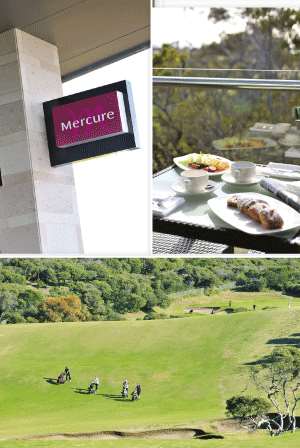 above & left: The resort’s king rooms and suites feature a king-sized bed, large LCD television, Wi-Fi access, work desk and a balcony with panoramic views across the golf course. The suites also have a very spacious ensuite with a large shower and spa bath. right: Views across the Portsea golf course from the hotel rooms are superb.
above & left: The resort’s king rooms and suites feature a king-sized bed, large LCD television, Wi-Fi access, work desk and a balcony with panoramic views across the golf course. The suites also have a very spacious ensuite with a large shower and spa bath. right: Views across the Portsea golf course from the hotel rooms are superb.The steel-framed concrete structure has a metal deck roof which extends outwards to cover a portion of the clubhouse terrace. The façade features extensive glazing to provide panoramic views of the course and a combination of rendered blockwork, alucobond, exotec compressed fibre sheeting and a feature stone wall. Buxton paid attention to both the acoustic treatment and insulation to minimise noise transference within the building and to conserve energy.
Next on the club’s wishlist is a new practice fairway, plus a full irrigation system and eventually an overall assessment of the entire layout and vegetation with Cashmore Design. That may take time but already Portsea is a multi-faceted, integrated operation catering to a far broader market than before. It has emerged as an ideal place for golfing groups to base themselves for long or short trips. Its appeal as a club to take up membership of has heightened thanks to the improvement of the existing facilities and addition of others. And the clubhouse is now the perfect place for weddings, functions, conferences and corporate entertainment. Mercure Portsea Golf Club & Resort has it all.
Mercure Portsea Golf Club & Resort
Location: 46 London Bridge Rd, Portsea VIC 3944
Golf: (03) 5981 6155; Hotel: (03) 5981 6100
The Mercure offers ‘Play & Stay’ packages that include 18 holes and a night’s accommodation for two in a king room with balcony overlooking the course. The hotel caters for conferences, events and weddings with conference day packages available from $55 per person and wedding packages starting from $135 per person, cocktail style, and $155 per person, sit down. Room rates at Mercure Portsea start from $169 per night.
Open daily for all meals, Spike restaurant offers modern cuisine using fresh local produce through its seasonal, a la carte menus. The restaurant features an extensive wine list, showcasing wines from the best of Australia’s wine regions, including the Mornington Peninsula’s own Red Claw Pinot Noir.
The Course
The relocation of the Portsea clubhouse to a different position on the site necessitated a shift in the traditional course routing. Not much needed to change with the physical layout (although some updates and alterations are planned for the future), however the starting and finishing holes for both nines had to switch in order to facilitate rounds beginning from the 1st and 10th tees. These tasks fell to course architect Todd Hyland from Cashmore Design.
The primary physical change to the layout was shortening the former par-5 6th hole to a par-4, as the hilltop site of the back tee was exactly where the new clubhouse and carpark were to be built. The hole was always a shade on the weak (read: short) side for a modern par-5 and it loses little of its impact as a par-4 played from 140 or so metres further down the hill.
The routing change also sees the old 6th begin the round. Players wander down from the pro shop located on the side of the new clubhouse to a new teeing ground to tackle the revised opening hole. From there play continues via the former 7th thru 12th holes (now holes 2-7) before deviating to play the old 18th and 1st as holes 8 and 9. This routing takes play to a point just below the new clubhouse, bringing nine-hole rounds or rounds starting from the 10th tee to within close proximity of the clubhouse and carpark. The re-sequenced back nine begins at the former 13th and continues to the old 17th before taking in holes 2-5 under the original routing (now holes 15-18) to conclude the round.
Given the new clubhouse’s location, it’s a practical routing and realistically the only option possible in order to achieve two returning loops of nine holes. However, whether by coincidence or some manner of cosmic forethought all those decades ago, the new sequence strengthens the overall layout by placing the most strategic holes at key points in the round. The new 17th and 18th holes, for instance, are two strong par-4s that previously sat innocuously in the middle of the front nine. The death-or-glory short par-4 that is now the 15th falls at a far more preferable part of the round than it did as the old 2nd. Likewise, the back nine begins with another of Portsea’s wonderful short two-shotters that works as a potential kickstart to the inward half. Rounds also now start with a benign but pleasant uphill short par-4 with plenty of space in the fairway to help alleviate 1st-tee nerves and get the field away. There’s also an ideal location for a future halfway house at the junction of paths behind the new 9th green as players pass this point three times, after the 7th, 9th and 14th holes.
Near the site of the former clubhouse beside the current 9th tee, a new tiered teeing ground far to the left of the previous tee alters the angle and insists on a right-to-left shape to a tee shot that could previously be struck quite straight. Future plans for the Portsea course include a Cashmore-led redesign of the par-3 16th hole and an overhaul of the 8th and 9th holes. This includes the removal of the row of cypress trees between the 8th and 9th fairways that is a feature of the tee shot on the latter, plus a levelling of the steeply side-sloped 8th fairway and the addition of a sandy waste area between the two holes as a replacement for the cypress trees. It’s a look that will drastically alter the visual element of the two holes but is in keeping with the era of transition Portsea is undergoing.
Another design change will see the current 1st green pushed back from its present location to one higher up the hillside that the green is presently benched into. This move won’t change the comfortable tee shot but will lengthen approaches. Elsewhere, the par-4 5th will see a new tee to lengthen a hole that is losing the battle with golf’s distance explosion. No timeframe has been established on any of these projects as the club waits for both the appropriate time and funds.
Rounds at Portsea really get going after the docile opener. The 2nd is a par-3 to a dell-style green where judging the wind from the high tee and predicting the bounce upon landing is never easy. The 3rd is a reachable par-5 in terms of distance yet holding the raised, domed putting surface with a long second shot is rare, plus the green is one of the most deceptively sloping on the course. The 4th packs a punch as the toughest hole, one defended by a pair of large bunkers on the inside of the dogleg-right and a bunkered green complex that generally accepts only aerial approaches. The 5th will play tougher when its new tee is constructed but as it stands is guarded by a sloping putting surface where a little artistry is needed to leave the ball below the cup.
The layout starts building real momentum from the 6th, a par-4 where the tee shot is blind to a sunken fairway and the second shot plays sharply uphill to a well-bunkered green. The par-3 7th asks for an all-carry tee shot thanks to the run-off fronting the narrow putting surface, while deep bunkers await any iron shot lacking the requisite accuracy. The outward nine closes with the former bookend holes, a par-5 at 8 that’s best played up the right side but on a right-to-left tilted fairway and the altered 9th where the second shot is again struck uphill to a raised green with run-offs in every direction, most steeply on the left side.
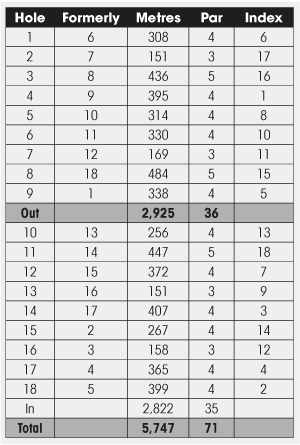 Previously played as the 15th hole, this challenging par-4 of 372 metres is now the 12th hole. The uphill second shot is the key with a two-tiered green protected by bunkers right and a steep hill to the left.
Previously played as the 15th hole, this challenging par-4 of 372 metres is now the 12th hole. The uphill second shot is the key with a two-tiered green protected by bunkers right and a steep hill to the left.There’s a touch of Royal Melbourne about the 10th hole, as the short, uphill par-4 resembles the famed short par-4 10th on the West course. Here, as at RM, the hole is quite simple when played as a lay-up and pitch but at 256 metres the temptation is to unleash a 3-wood or driver in a bid to set up an eagle putt. Wayward balls, however, may not be discovered for five months, let alone five minutes. Another birdie chance beckons at the 11th, a short par-5 from an elevated tee that invites a bold swoosh with the driver. The layup zone and area fronting the green are both narrow, ensuring only the most accurate of shots find the surface.
Portsea’s 12th fairway descends from a plateau atop a ridge to a lower section of ground. The downslope generates bonus distance for the tee shot but it also makes the second shot play uphill. Watch that the same downslope doesn’t kick your drive to the less-desirable right side of the fairway, too. The 13th is an exposed par-3 to a green complex much like that at No.12, where the well-bunkered putting surface angles from back right to front left.
The routing change that pairs the 14th and 15th holes is genius – a long, downhill par-4 at 14 where the tee shot meanders forever as it bounces and bobbles along a cantered fairway leaving a narrow approach shot before a brilliantly simple short par-4 at 15. The 267-metre 15th is now arguably more enticing to drive as the relocation of the club’s entrance road necessitated the removal of dense scrub behind the green. In its place is an exposed hollow that is testing but far less penal than the flora it used to house. The tee shot is blind thanks to a spur in the land that obscures the target. A straight drive can bounce and run within chipping distance of the flag but anything off-line risks travelling either out-of-bounds to the right or down into impenetrable bush the other way. The green is not overly difficult to manage if you can just get the tee shot right.
The 16th continues the crescendo the previous two holes started building. A downhill par-3 with a green perched into a hillside, tee shots missing the target left will run off towards the 17th fairway while anything struck to the right risks sticking in the long rough lining the bank. Some shots landing on this hill bounce onto the putting surface, others hang up.
The two closing holes add bulk to Portsea’s excellent array of shorter holes. The 365-metre 17th offers a bailout along the right half, as balls struck along this side tend to gather towards the short grass but anything drifting left usually results in a re-tee. The green is largely open but slopes subtly to the right, often sending seemingly good approach shots wide of the target. The home hole is a long par-4 that plays like a par-5 if the tee shot isn’t perfect, as a huge cross bunker that disguises the green protrudes into play and makes the second shot awkward if the tee shot isn’t pure. The terrain does help approaches struck safely along the left side feed towards the flag although rarely all the way to the cup. Closing birdies usually result only from bold, brave second shots – much like the bold, brave play made by Portsea Golf Club in guaranteeing its long-term future.
The Fact File
Location: 46 London Bridge Rd, Portsea. The club is a 90-minute drive from the Melbourne CBD via Eastlink and
the Mornington Peninsula Freeway. Follow the signs to Portsea then take Back Beach Rd and London Bridge Rd. The new entry is via the southern side of the golf course, no longer from Relph Ave on the northern side.
Contact: (03) 5981 6155.
Website: www.portseagolf.com.au
Designers: Jock Young (1926)/Sloan Morpeth & Jack Howard (1965)/Mike Clayton (2000).
Playing surfaces: Poa annua and bentgrass (greens), Santa Ana couch (fairways and tees).
Course superintendent: Brad Harris.
PGA professionals: Wendy Dragojlo and Joel Warner.
Green fees: $60 midweek, $70 Sundays and public holidays. Add $10 between December 26 and January 31.
Related Articles

International Spotlight: Omanu Golf Club
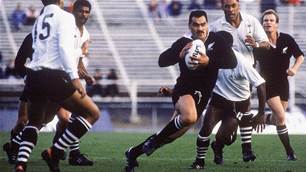
Celebrity Kiwi couple tee off in paradise

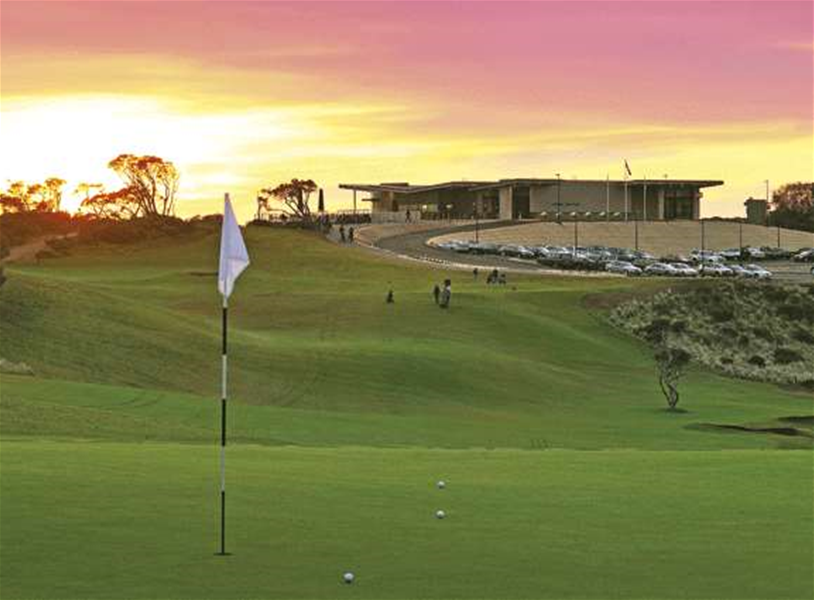
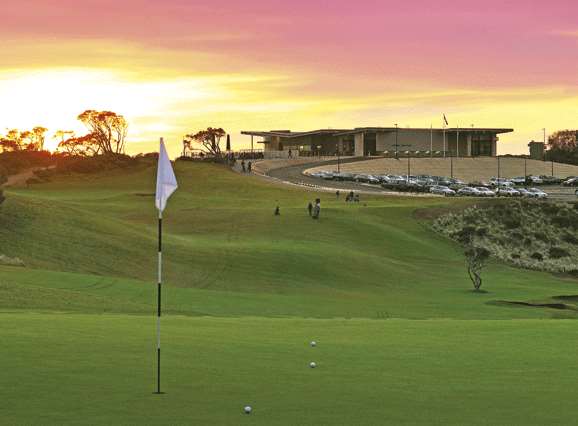
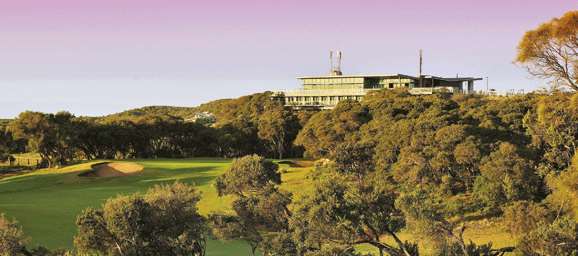
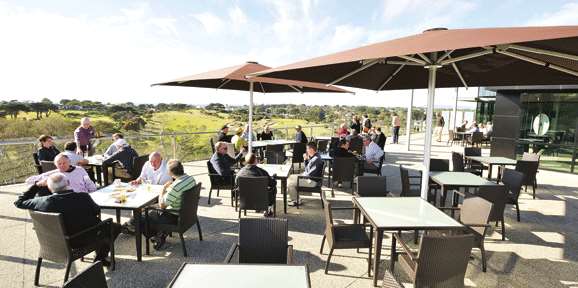


.jpg&h=115&w=225&c=1&s=1)









